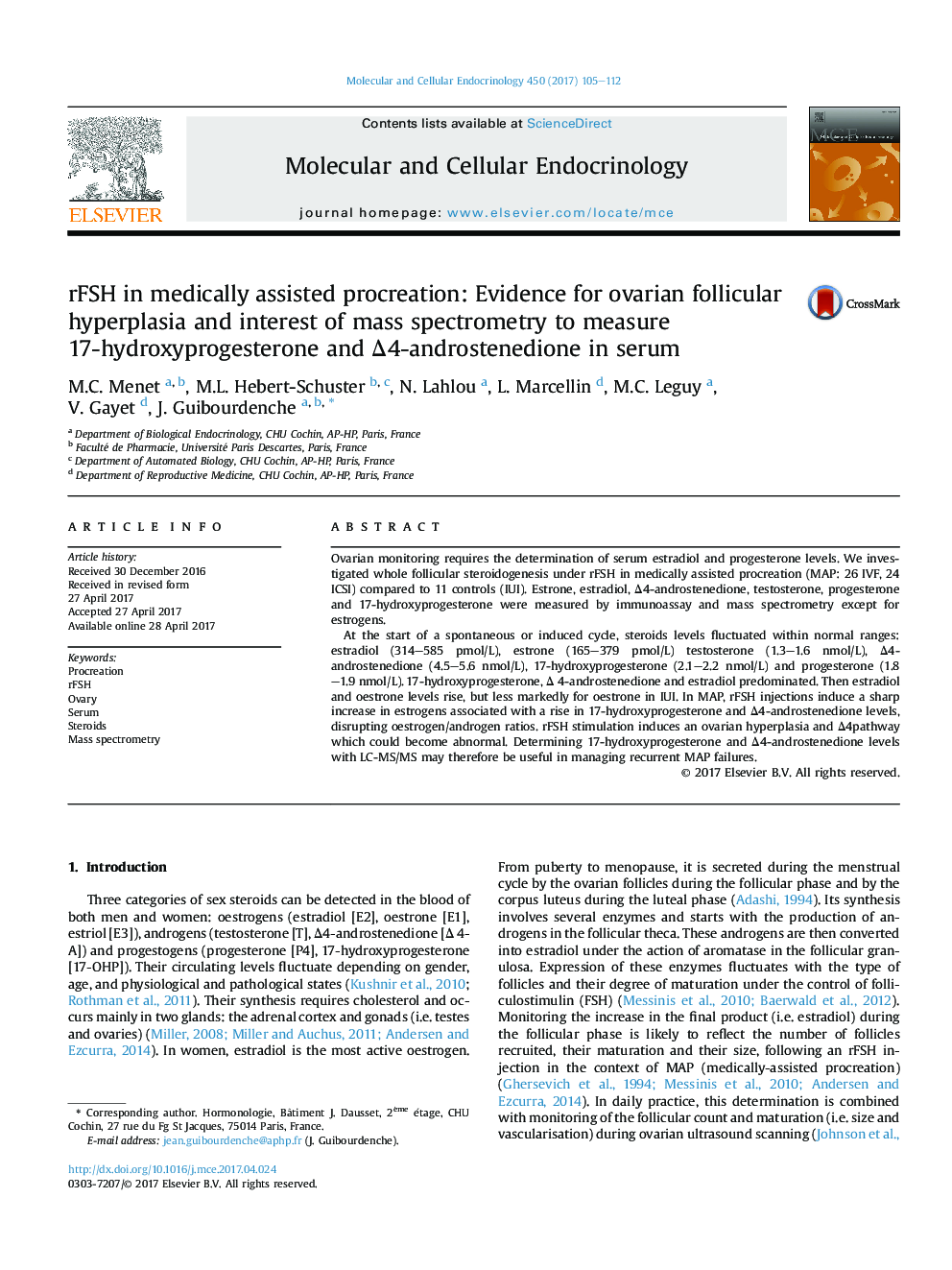| Article ID | Journal | Published Year | Pages | File Type |
|---|---|---|---|---|
| 5534174 | Molecular and Cellular Endocrinology | 2017 | 8 Pages |
â¢Ovarian steroidogenesis is a dynamic process presenting wide individual variations.â¢rFSH injections in MAP do not increase this variability.â¢rFSH injections increase E2 but also 17-OHP and Î4-androstenedione levels.â¢Analysis of androgens by LC-MS/MS helps to investigate androgens/estrogens ratio.
Ovarian monitoring requires the determination of serum estradiol and progesterone levels. We investigated whole follicular steroidogenesis under rFSH in medically assisted procreation (MAP: 26 IVF, 24 ICSI) compared to 11 controls (IUI). Estrone, estradiol, Î4-androstenedione, testosterone, progesterone and 17-hydroxyprogesterone were measured by immunoassay and mass spectrometry except for estrogens.At the start of a spontaneous or induced cycle, steroids levels fluctuated within normal ranges: estradiol (314-585Â pmol/L), estrone (165-379Â pmol/L) testosterone (1.3-1.6Â nmol/L), Î4-androstenedione (4.5-5.6Â nmol/L), 17-hydroxyprogesterone (2.1-2.2Â nmol/L) and progesterone (1.8-1.9Â nmol/L). 17-hydroxyprogesterone, Î 4-androstenedione and estradiol predominated. Then estradiol and oestrone levels rise, but less markedly for oestrone in IUI. In MAP, rFSH injections induce a sharp increase in estrogens associated with a rise in 17-hydroxyprogesterone and Î4-androstenedione levels, disrupting oestrogen/androgen ratios. rFSH stimulation induces an ovarian hyperplasia and Î4pathway which could become abnormal. Determining 17-hydroxyprogesterone and Î4-androstenedione levels with LC-MS/MS may therefore be useful in managing recurrent MAP failures.
Graphical abstractDownload high-res image (153KB)Download full-size image
